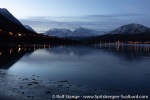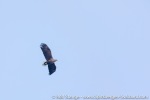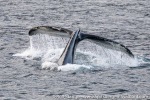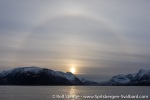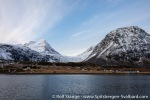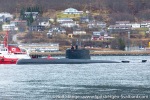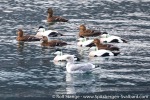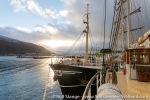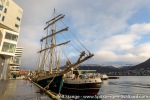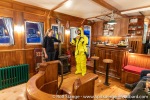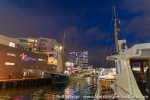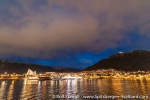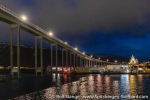-
current
recommendations- Liefdefjord
New page dedicated to one of Spitsbergen's most beautiful fjords. Background information and many photos.
- New Spitsbergen guidebook
The new edition of my Spitsbergen guidebook is out and available now!
- Liefdefjord
New page dedicated to one of Spitsbergen's most beautiful fjords. Background information and many photos.
Page Structure
-
Spitsbergen-News
- Select Month
- May 2025
- April 2025
- March 2025
- February 2025
- January 2025
- December 2024
- November 2024
- October 2024
- September 2024
- August 2024
- July 2024
- June 2024
- May 2024
- April 2024
- March 2024
- February 2024
- January 2024
- December 2023
- November 2023
- October 2023
- September 2023
- August 2023
- July 2023
- June 2023
- May 2023
- April 2023
- March 2023
- February 2023
- January 2023
- December 2022
- November 2022
- October 2022
- September 2022
- August 2022
- July 2022
- June 2022
- May 2022
- April 2022
- March 2022
- February 2022
- January 2022
- December 2021
- November 2021
- October 2021
- September 2021
- August 2021
- July 2021
- June 2021
- May 2021
- April 2021
- March 2021
- February 2021
- January 2021
- December 2020
- November 2020
- October 2020
- September 2020
- August 2020
- July 2020
- June 2020
- May 2020
- April 2020
- March 2020
- February 2020
- January 2020
- December 2019
- November 2019
- October 2019
- September 2019
- August 2019
- July 2019
- June 2019
- May 2019
- April 2019
- March 2019
- February 2019
- January 2019
- December 2018
- November 2018
- October 2018
- September 2018
- August 2018
- July 2018
- June 2018
- May 2018
- April 2018
- March 2018
- February 2018
- January 2018
- December 2017
- November 2017
- October 2017
- September 2017
- August 2017
- July 2017
- June 2017
- May 2017
- April 2017
- March 2017
- February 2017
- January 2017
- December 2016
- November 2016
- October 2016
- September 2016
- August 2016
- July 2016
- June 2016
- May 2016
- April 2016
- March 2016
- February 2016
- January 2016
- December 2015
- November 2015
- October 2015
- September 2015
- August 2015
- July 2015
- June 2015
- May 2015
- April 2015
- March 2015
- February 2015
- January 2015
- December 2014
- November 2014
- October 2014
- September 2014
- August 2014
- July 2014
- June 2014
- May 2014
- April 2014
- March 2014
- February 2014
- January 2014
- December 2013
- November 2013
- October 2013
- September 2013
- August 2013
- July 2013
- June 2013
- May 2013
- April 2013
- March 2013
- February 2013
- January 2013
- December 2012
- November 2012
- October 2012
- September 2012
- August 2012
- July 2012
- June 2012
- May 2012
- April 2012
- March 2012
- February 2012
- January 2012
- December 2011
- November 2011
- October 2011
- September 2011
- August 2011
- May 2011
- April 2011
- March 2011
- February 2011
- January 2011
- December 2010
- November 2010
- September 2010
- August 2010
- July 2010
- June 2010
- May 2010
- April 2010
- March 2010
- February 2010
- November 2009
- October 2009
- August 2009
- July 2009
- June 2009
- May 2009
- April 2009
- March 2009
- February 2009
- January 2009
- December 2008
- November 2008
- October 2008
- August 2008
- July 2008
- June 2008
- May 2008
- April 2008
- March 2008
- February 2008
- April 2000
- Select Month
-
weather information
-
Newsletter

| Guidebook: Spitsbergen-Svalbard |
Home → October, 2021
Monthly Archives: October 2021 − News & Stories
From Nord-Lenangen to Kvænangen
Sat
30 Oct
2021
We spent the night in Nord-Lenangen and continued from there to the northeast to reach the Kvænangen area today. An amazing area! The scenery, the light, sea eagles, whales, …
But have a look yourself. Some impressions without too many more words:
- gallery anchor link: #gallery_2124
Click on thumbnail to open an enlarged version of the specific photo.
The arctic travel blog continued: Tromsø
Fri
29 Oct
2021
The polar night has come down over Spitsbergen. In the Tromsø area in north Norway, the sun still makes it above the horizon for exacty 7 hours as of today. It is getting less and less every day now.
Next to the darkness, the herring has returned to the fjords in north Norway.
This means that chances are good now for both northern lights and orcas. And that’s what it is (almost) all about for us for a while now. I will be on MS Cape Race for a week now, a ship that I have not been on before. But everybody keeps telling me that she is great so I did certainly not want to miss the opportunity as I got the offer to join now. A beautiful ship! And a very warm and friendly welcome. Great!
There were still a couple of hours time in Tromsø before we were getting ready to go. I took the chance for an update on the regional geology in Tromsø museum. The famous terrella was unfortunately not on display right now, because of reconstruction work :-/ well, next time.
- gallery anchor link: #gallery_2121
Click on thumbnail to open an enlarged version of the specific photo.
Now we are on the way, under a beautiful sky of stars, even the Milky Way comes out nicely, but no northern lights yet. Well, we’ll see what the next days bring! The predicted Kp value for tomorrow (Saturday) is really high, so maybe the lights will even be visible from northern central Europe? Fingers crossed! Not so good for the north Norway area, but we’ll see. We have got time, so our chances for northern lights are good anyway. Fingers crossed.
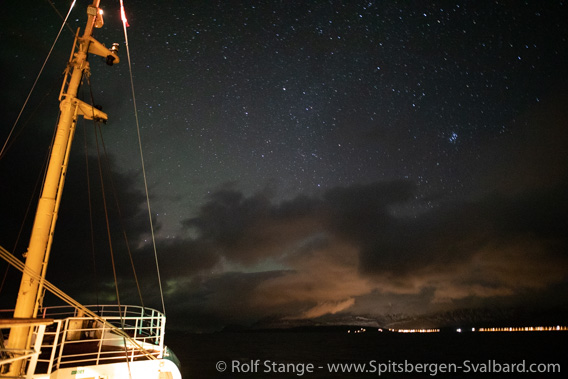
Sky of stars over Ullsfjorden northeast of Tromsø
(photo taken from the ship during cruising).
Stricter rules in the making
Observing Norwegian governmental activities to tighten rules concerning traffic and tourism in Spitsbergen has been a constant and mostly rather unpleasant part of running this website since I started it in 2006. Legal proposals have, without any doubt, included improvements, some of them long due – one may well ask why it was possible until recently that pretty much anyone could just rent a firearm legally in Longyearbyen, almost like a bicycle elsewhere. Other legal improvements have, so far, remained a dream for environmentalists, for example a ban on heavy oil in all waterways of the whole archipelago, or a limit on the number of persons on ships allowed into the 12 mile zone – an accident of a large cruise ship, with passenger and crew numbers orders of magnitude beyond anything emergency services could handle, remain a nightmare.
On the other hand, it is hard to believe what authorities sometimes come up with.
Currently, it seems to be a bit of both, with a distinct emphasise on the bizarre aspect. Again, a tightening of the existing framework of regulations that control traffic and tourism in Svalbard is under discussion. The Norwegian environmenta authority (miljødirektoratet) has brought a proposal into a public hearing phase. The hearing will be open until February 03, 2022. Until then, everybody can give his or her opinion into the process. Based on experience with recent regulatory processes, however, observers doubt that opinions issued by others than the authorities involved will seriously be taken into consideration.
So, what’s going on? Some of the most important changes that are included in the current proposal may be summarised (and commented) as follows (not comprehensive). When “large protected areas” are mentioned, then this includes the national parks Northwest Spitsbergen, South Spitsbergen, Forlandet (Prins Karls Forland), Van Mijenfjord and Indre Wijdefjord as well as the nature reserves Northeast Svalbard and Southeast Svalbard. In other words, most of the archipelago except Isfjord, parts of Forlandsund and Kongsfjord.
So, the following changes are included in the current proposal:
- Ships are not allowed to have more than 200 passengers on board in the national parks (this is already the case in the nature reserves. The proposal does not include waters outside the large protected areas. In other words: large cruise ships may still come into Isfjord with any number of passengers and crew on bord).
- Now, the following point is, for most, probably the most important and drastic one: the legal principle of where it is allowed to move around in the large protected areas is turned around: so far, the situation is essentially that you can move around, also on land, anywhere unless it is forbidden. Now it is proposed that this should be turned around: it is generally forbidden to go on land in the large protected areas unless it is specifically allowed, which is only planned for 42 locations – in an area comprising several ten thousand square kilometres. Most parts of the archipelago would thus effectively be closed to the public.
An example: according to the proposal made by the miljødiretorat, there would only one landing site be available on Prins Karls Forland (Poolepynten). Other than this one location, the whole island, which is more than 80 km long, would be closed to the public. More than 10 sites around the island – mostly on the east side – have, however, been visited by tourists more or less regularly in recent years.
This is just an example; things would be similar in the other large protected areas, which comprise effectively most of the archipelago. The consequences for ship-based tourism as it is happening today (set corona aside for a moment) would be dramatic. The desire to experience the huge diversity of the landscape and the need to have a choice because of other ships operating in the same area is one reason, but another, even more important one is simply safety: it is daily routine that a landing site has to be changed on short notice because wind weather do not permit a a safe operation. In such a situation, it is common routine to move the landing to another site with better conditions to operate safely, something that happens frequently. The presence of a polar bear in the vicinity is another factor that often requires the same kind of reaction. If it is not possible anymore to react in a flexible way, pressure will increase to make landings under conditions less than ideal or potentially even in dangerous conditions.
Out of the 42 landing sites that are included in the proposal, a number is to be restriction to a maximum number of 39 people ashore at any time. - The ban on motorised traffic (snow mobiles) on fjord ice in a number of fjords that has so far been issued every season for some years now is to receive legal status. This has already happened earlier this year regarding Van Mijenfjord and Van Keulenfjord and the current proposal includes Tempelfjord, Billefjord and Dicksonfjord.
- Regulations regarding traffic in the vicinity of polar bears are to be tightened considerable. So far, it is forbidden to approach polar bears in a way that may lead to danger to humans or bears. There is, as of now, no legally required minimum distance, and it is, in reverse conclusion, legally possible to approach polar bears in a safe manner – usually done by boat – as long as this does not lead to any disturbance. Disturbing wildlife is generally prohibited, including polar bears as well as any other wildlife. According to the current proposal, there will be a general minimum distance of 500 metres from polar bears.
- A maximum speed of 5 knots in the vicinity of certain bird colonies for boats (who would want to argue against that?).
- Ships and boats have to keep a minimum distance of 300 metres to walrus haulout sites.
- The use of drones will largely be forbidden.
Remarkably enough, the proposal does also include some legal facilitations, although of a rather punctual nature:
- No specific permit is required anymore for visits to Virgohamna.
- The “no traffic zone” around the remains of the pomor site and whaling station in Habenichtbukta on Edgeøya is to be abolished.
- The legal requirement for site-specific guidelines is to be abolished (according to the proposal, most sites in question would be off limits anyway).
Of the above-mentioned points, the second one is the one that bears the most radical change compared to the status quo, limiting the traffic to a small number of locations in huge areas that can, until now, be visited relatively freely. This would have a dramatic impact on the practice of ship-based tourism as it is today. A similar proposal was already under discussion around 2008/09. Back then, the proposal was finally considered unreasonable and unsubstantiated and it was hence largely rejected.
A comparison between the following to sketch maps will illustrate the difference between today’s legal regime and practice (first map) and the current proposal (second map).
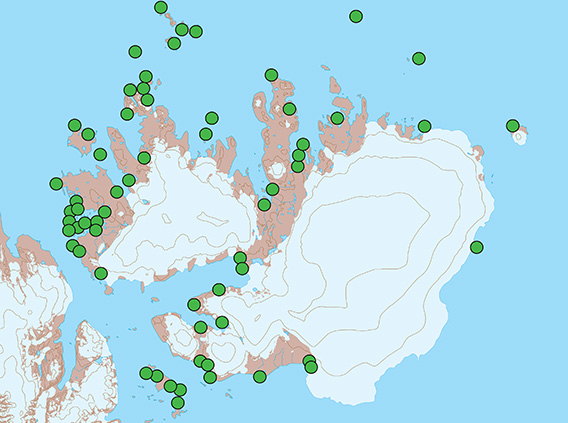
Landing sites on Nordaustland and nearby islands that have been visited by tourists in recent years (not complete).
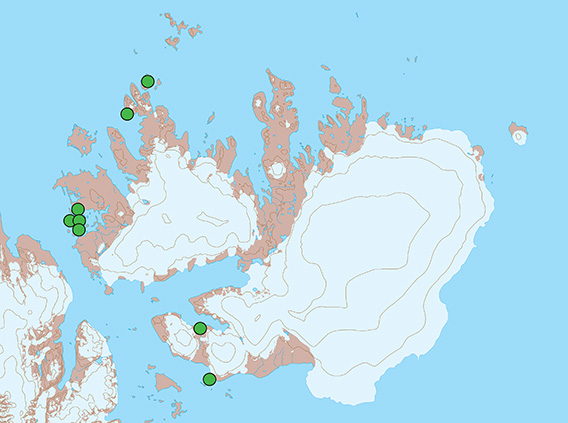
Landing sites in the same area that would be available according to the current proposal (complete).
This example includes just Nordaustland and the surrounding islands. Similarly drastic illustrations could be made for most other parts of Svalbard.
It is, so far, “only” a legal proposal in a public hearing stage that is open until early February 2022. After that, the proposal will go through the usual process and we will see what comes out of it. According to the environmental authority (miljødirektoratet), the changes will come into force in 2023.
Also the new Norwegian government has announced to continue with the exploration of new oil and gas fields in the Barents Sea. Also bottom trawling, an ecologically devastating form of fishery, will remain possible even in the nature reserves.
Introduced mice spread into the wild
There are, by default, no rodends in Spitsbergen. But things changed when the settlements were established in the early 20th century. A vole originally from eastern Europe (microtus levis) came up most likely with animal feed. The vole is well established in the vicinity of Grumantbyen although the places was abandoned in 1962.
Von Natur aus gibt es in Spitzbergen keine Nagetiere. Die Osteuropäische Feldmaus (Microtus levis) ist im 20. Jahrhundert mit dem Menschen eingereist, wahrscheinlich mit Tierfutter. Gehalten hat sich sich in einem Gebiet mit vergleichsweise üppiger Vegetation, nämlich unter den Vogelfelsen östlich der 1962 aufgegebenen russischen Siedlung Grumantbyen, zwischen Longyearbyen und Barentsburg. Traces of various sorts are frequently found in large area stretching from Barentsburg in the west to Sassenfjord in the east. Norwegian Polar Institute biologists monitor the population with camera traps and real traps which are laid out by people in Longyearbyen.

Vole (microtus levis) in a trap inLongyearbyen.
Photo © Max Schweiger.
The result: the voles seem to have established a stable population not only in Barentsburg and Grumantbyen, but also in the area of Diabasodden and Hatten, two adjacent cliffs with seabirds colonies in Sassenfjord. This indicates that the rodents can survive on their own in the wilderness in Spitsbergen. This may have to do with a warming climate, especially in the winter.
Experts do not consider this development a threat for the regional ecosystem and biodiversity, and the Norwegian authorities have so far decided against an attempt to erradicate the introduced voles in Spitsbergen. Other countries, namely New Zealand and Australia, are taking a much different approach on their subantarctic islands, where mice, rats and other introduced species have been erradicated with great effort, as has been on quite recently in South Georgia.
First Covid-19 case in Spitsbergen
On Wednesday (06 October), Spitsbergen got the first confirmed case of a Covid-19 infection. The patient was not a local or a tourist, but a crew member of a Russian fishing ship who got evacuated for medical reasons near Bjørnøya, as NRK wrote. He was flown to Longyearbyen and later to the university hospital in Tromsø. There is only one intensive care bed with artificial respiratory equipment in Longyearbyen.
There is no suspicion of further infections, for example amongst the personell of the helicopter or in the hospital in Longyearbyen. The vaccination rate in Longyearbyen’s adult population is beyond 90 %, and locally, the public opinion about possible infections is generally relaxed.
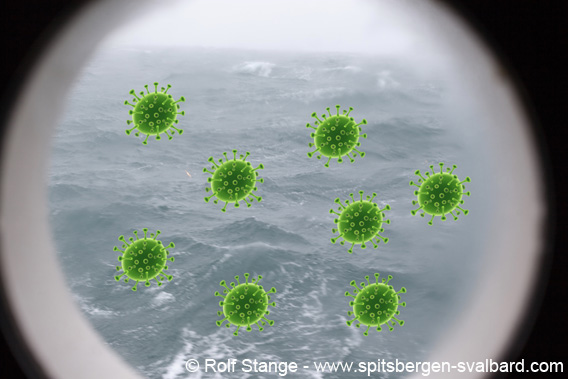
Corona viruses on high seas: a crew member of a Russian fishing vessel was tested positive – the first positive corona test in Longyearbyen.
Until now, there had not been any officially confirmed corona infections in Spitsbergen beyond those on board the Hurtigruten ship Roald Amundsen in 2020, but the Roald Amundsen had not been to any of the settlements. The remarkably long period without any corona infections may, however, also have to do with the rather interesting local testing strategy, which is described as follows by some who wanted to get themselves or their children tested because they had symptoms which they considered relevant: “You have symptoms? Stay at home!” And later: “You don’t have symptoms? Then you don’t need a test.” This is also a way to keep a place corona-free 🙂 at least on paper.
In late September, Norway has lifted most corona restrictions, including travel restrictions for European countries and certain travellers from other countries, according to the Norwegian government.
Non-Norwegian locals may lose the right to vote
August and September have finally brought some soul food to the travel blog, which I hope you have enjoyed. Now it is time to catch up with some news. Not all of them are good ones, unfortunately.
Foreign residents of Longyearbyen may lose voting rights
Earlier this year, the Norwegian government in Oslo has made a proposal that would lead to the withdrawal of voting rights on a community level from non-Norwegian locals in Longyearbyen. The matter is complex; it is based on the Spitsbergen Treaty which puts the Spitsbergen islands under Norwegian sovereignty. Based on that, a Norwegian law from 1925 determined that “Svalbard is part of the Kingdom of Norway”. But depending on the occasion, Spitsbergen is sometimes treated as part of Norway and sometimes as a foreign territory by Norwegian authorities.
Non-Norwegian citizens who live in Norway usually get the right to vote and to be elected on a community level after 3 years of residence. This is also valid for Longyearbyen since there is an elected community council there (Lokalstyre), which was established in 2002.
Now, earlier this year the Norwegian government made a proposal that ties the right to vote (and to be elected) to a residence period of at least 3 years in a community on the Norwegian mainland. Residence in Longyearbyen would not count anymore, according to this proposal.
It will not surprise that this proposal was mostly not met with sympathy in Longyearbyen, especially amongst those directly concerned. Withdrawing voting rights from a significant part of the local population does not fit well into a European democratic context.
The change of government that followed to the parliamentary elections in Norway in September does, so far, not seem to have any consequences for the proposal, which was discussed in September in Longyearbyen by local politicians during a council meeting.
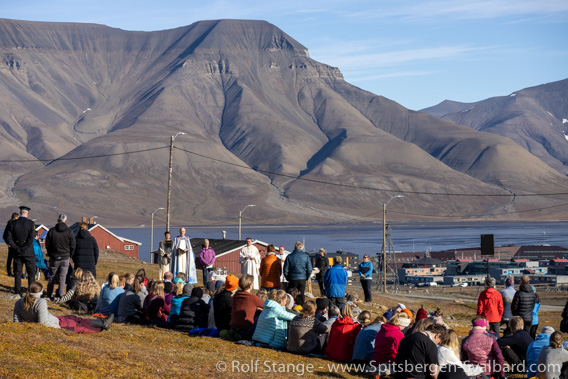
Longyearbyen has an international population with Norwegians being the largest group. The local council is dominated by Norwegian delegates.
Delegate of centre and right-wing parties stoke fears
It is remarkable how a delegate of the right-wing “Fremskrittsparti” (“Progress party”) commented the matter, as quoted by Svalbardposten (this author’s translation): “… people who have not been to Norway, who do not have relatives in Norway, who do not have any connection to Norway, who do not have any particular interest in Norway, may come to Svalbard, vote and get elected themselves. For many it is logical that this should not be so. This is a shame for the good citizens that we have here, most of whom are reasonable people, but it is a question of security: we can just not take the risk.”
It is one of many remarkable aspects of this comment that the speaker implies that Svalbard is not part of Norway. Otherwise, residence in Longyearbyen would naturally imply a connection to Norway and an interest in the country.
A delegate of the party “Høyre” (“Right”) made a similar statement: “We risk that so many foreigners come that there may not be a single Norwegian in the council.”
This fear is by no means reflected by reality, neither in the local population nor in the composition of the council – even less by the latter, actually, which is strongly dominated by Norwegian delegates.
Social democrats and left delegates speak out in a differentiated way or critically
Mayor Arild Olsen from the social democratic Arbeiderparti spoke out very critically about the poposal, using both practical arguments and considerations of democratic theory. Delegates of the party “Venstre” (“Left”) made differentiated comments.
As a result, the council was not able to come up with a cohesive statement and the issue will be taken up again later. The deadline for the hearing is 25 October.
News-Listing live generated at 2025/May/02 at 13:42:17 Uhr (GMT+1)
